Retreat Locally
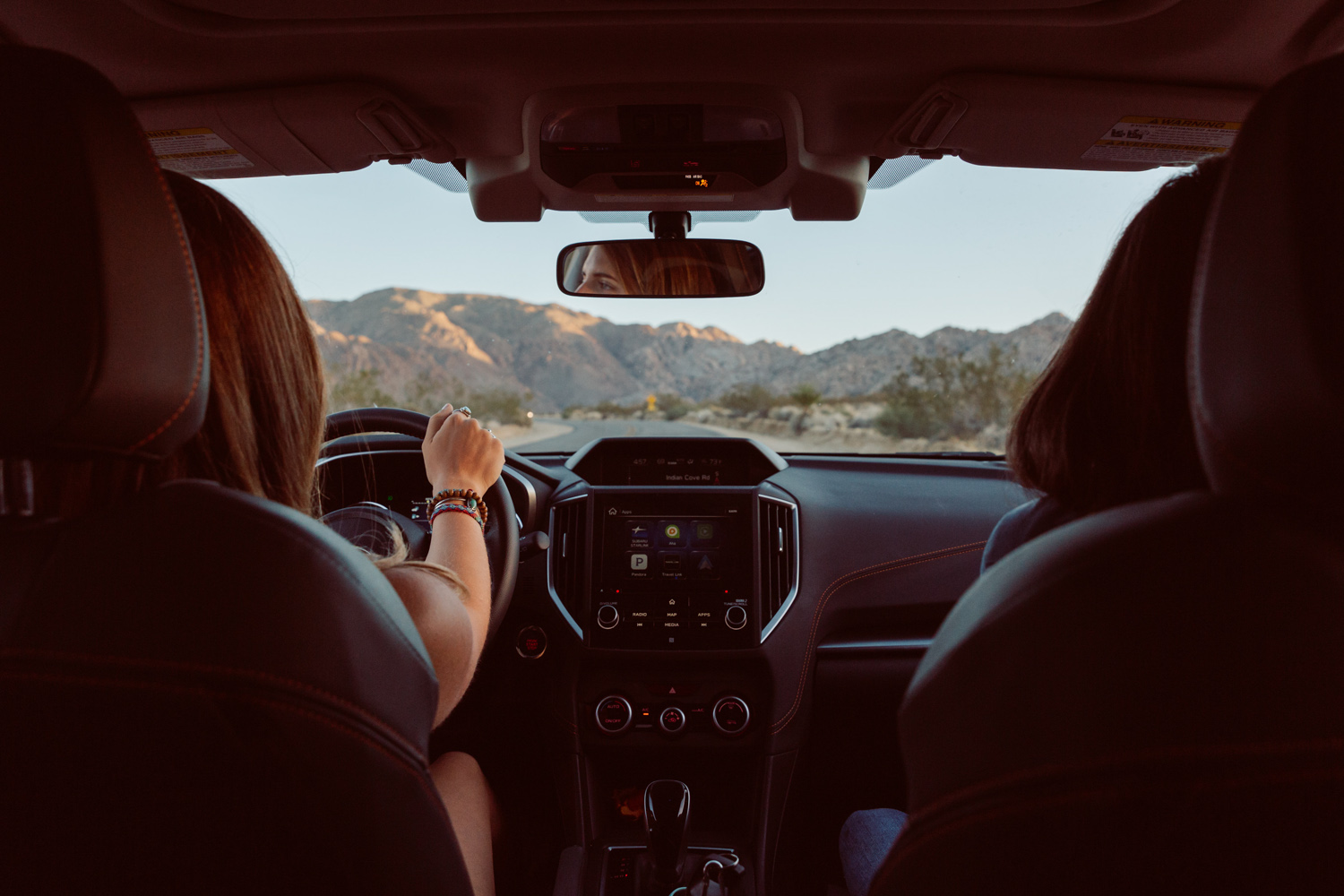
Retreat Locally
How to Plan a Restorative and Rejuvenating Retreat Close To Home
By Anna Brones, in partnership with Subaru.
Banner image by Jules Davies.
“The dream was always running ahead of me. To catch up, to live for a moment in unison with it, that was the miracle.” – Anaïs Nin
Thinking about our dreams – what they are, how they might be changing, what we want them to be in the future – is a big topic, one that requires time and space.
It’s hard to fit that kind of thinking in between sending emails, and in our everyday lives it can be difficult to find the balance between “on” and “off” time. This is what makes retreats so desirable, providing the time and space to explore ideas and activities that we struggle with at home.
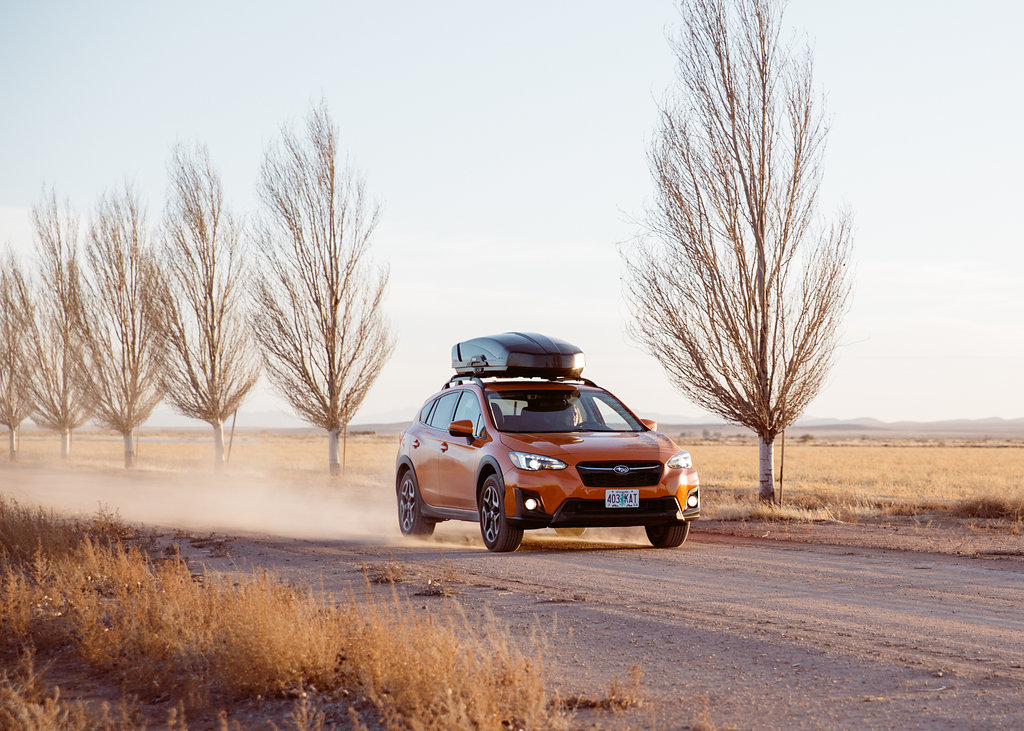
Driving in dusty New Mexico. Photo by Jules Davies
I recently went on a week-long road trip and workshop with She Explores and Subaru (to and in Marfa, Texas) and was reminded of the benefits of taking a few days to immerse myself in the act of exploring, thinking, and creating. I came out of the experience feeling more rejuvenated than I had in a long time. Instead of chasing after something, I felt that instead I got to spend time with it, be in the moment, be present.
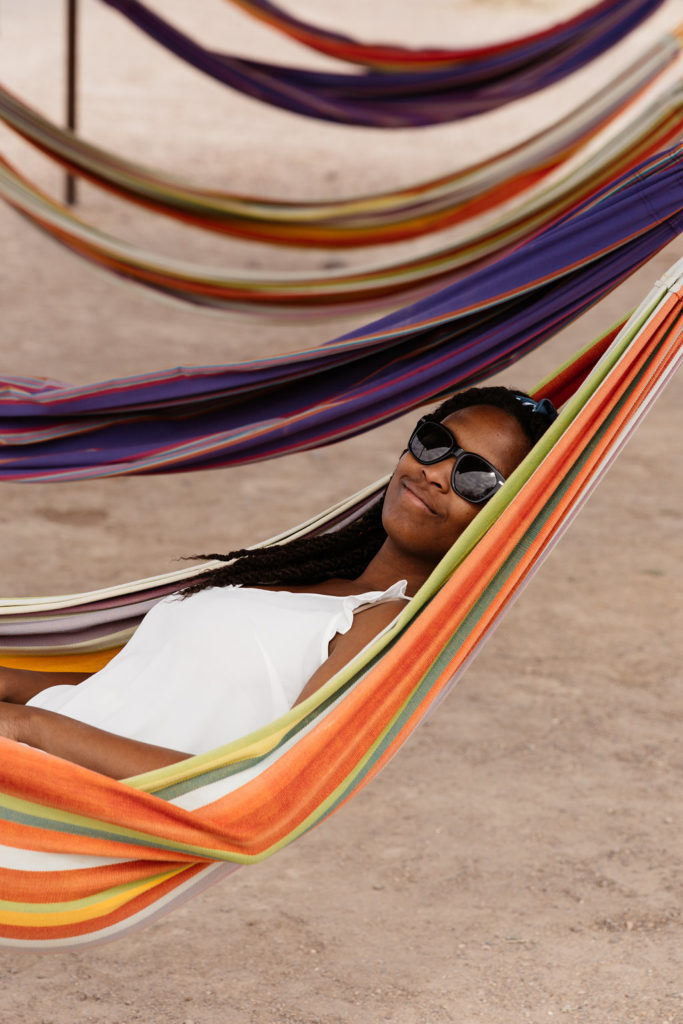
Doing “nothing” but not wasting time, relaxation can be rejuvenating – photo by Jules Davies
To have this time to be able to check out from the requirements of daily life is certainly a form of luxury. But a restorative retreat doesn’t have to be long or far away, and can be done with simple tools available to you.
While we often think of rest as the act of doing “nothing,” what our brains and bodies truly need is restorative activity.
There are many benefits to making the time and space for this kind of a retreat, particularly because a creative brain needs rest. While we often think of rest as the act of doing “nothing,” what our brains and bodies truly need is restorative activity. This is the time and space to get away from work but to engage, both physically and mentally, in activities that can help to recharge us.
All of this can be done close to home and in the span of just a couple of days, so if you’re in need of recalibration and recharging, here are a few things to consider incorporating when planning a retreat:
Get away from home
Removing yourself from your day-to-day space gives you a physical distance from your everyday routine, and that physical distance can also provide for mental distance; think of it as giving your brain a blank slate. This doesn’t have to be far from home. If you want to get away for a night or two, keep things simple and car camp at a nearby state park or campground.
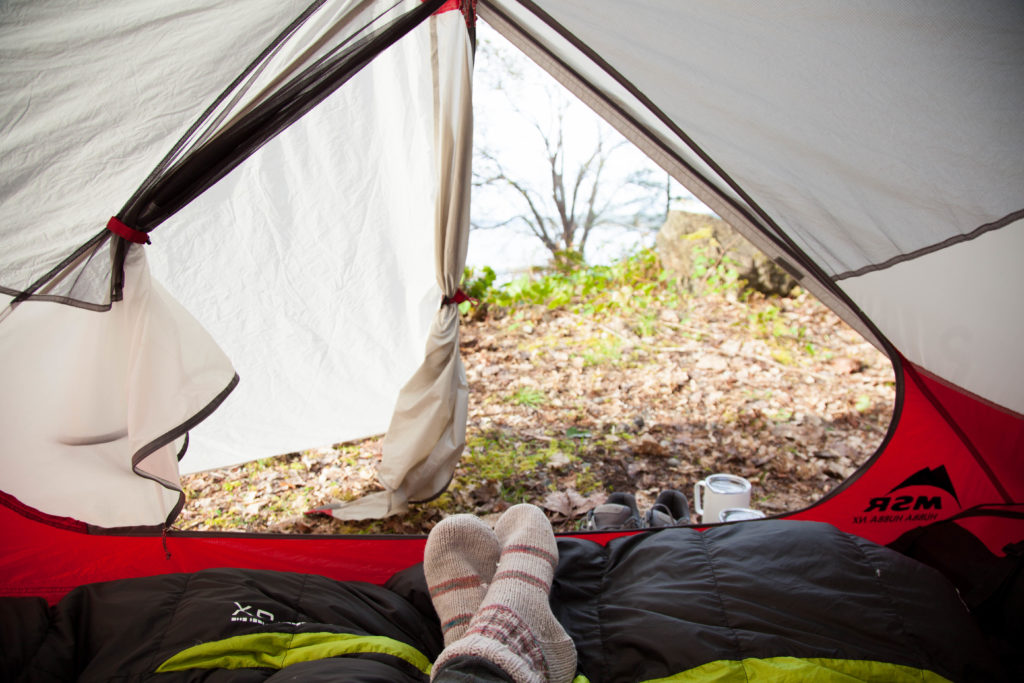
View from the tent – photo by Anna Brones
If you only have a day available, or don’t have the ability to stay overnight away from home, find a space that you can go to for the duration of the day.
If you do want to host a retreat at your home, or at a friend’s house, consider making some changes that will make the space feel a little different. Moving furniture or lighting a few candles can help to make even your own space feel very different.
Eat well
To nourish your brain and soul you want to nourish your body. Keep meals simple, but find joy in the act of making them. If you’re doing a retreat with friends, have everyone plan one meal, so that the responsibility is shared. Plan for a few treats too, something that makes you feel that you’re doing something special you don’t usually do at home – some indulgent chocolate or s’mores made by the campfire, for example.
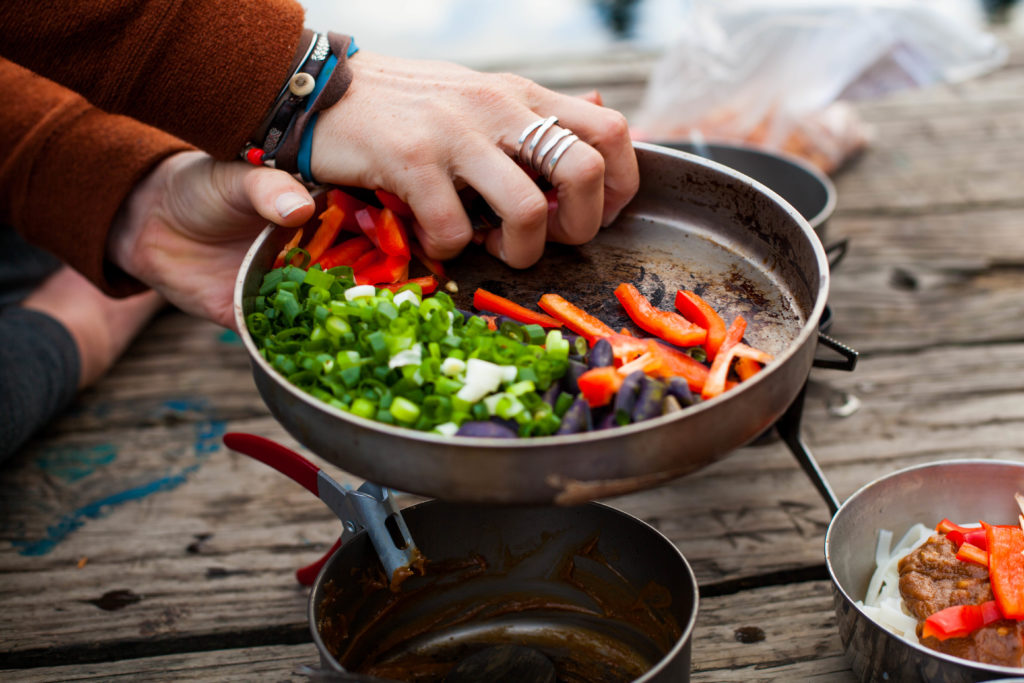
A simple but nourishing meal in progress – photo by Anna Brones
Remove distractions
One of the main benefits of a retreat are that you are solely focused on the goals of the retreat. There are no dishes to be washed, no grocery list to be concerned about. This is important to consider, even for a daylong retreat. Think about how you might be able to remove distractions so that you can better be in the moment, like making a “phones off” rule.
Move your body
There are all kinds of links between physical activity and mental well being, particularly as it relates to creativity. Plan for a physical activity that challenges you but doesn’t fully exhaust you. Like a hike, a run, a bike ride, or a morning yoga practice. Connect that physical activity with an intention. If you’re on a hike or a bike ride, give yourself a quote or a question to think about while you’re out. If you’re comfortable planning a yoga sequence, think about a theme that you want to plan around, like gratitude, presence, etc.
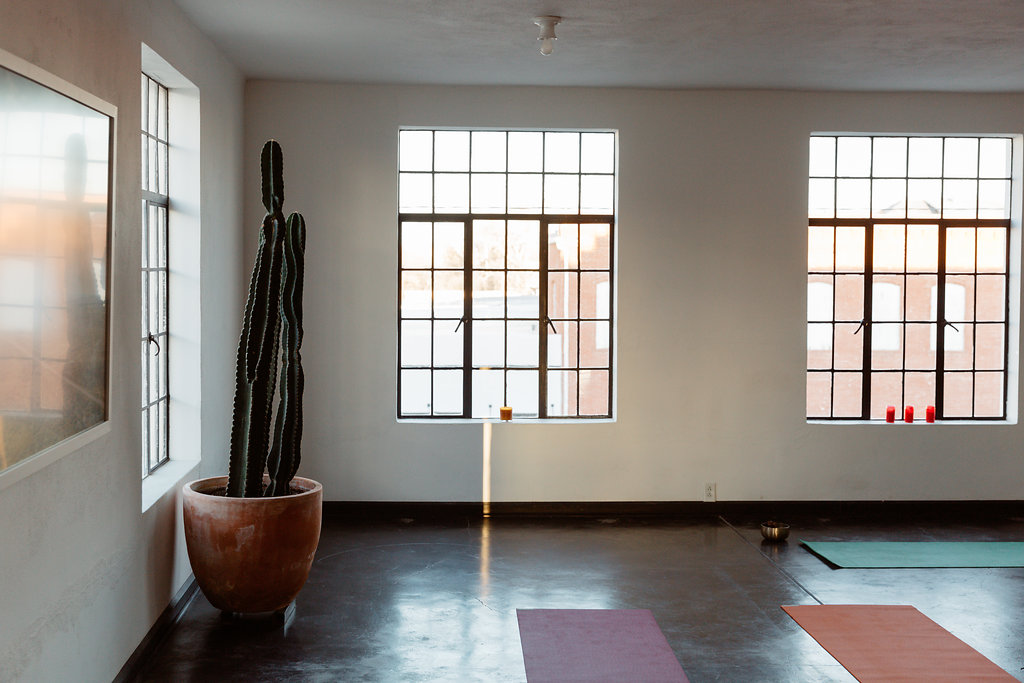
Calm light in the studio for morning yoga – photo by Jules Davies
Plan time for journaling
Think of a journaling practice like cleaning out the cobwebs. I like Julia Cameron’s practice of morning pages, three pages written as stream of consciousness. This kind of writing doesn’t have to lead to award winning prose, but often, writing in a stream of consciousness can help us get the creative juices flowing, and often helps our brains to process ideas that we didn’t even know were on our minds. This is also a great practice to take back into your everyday life.
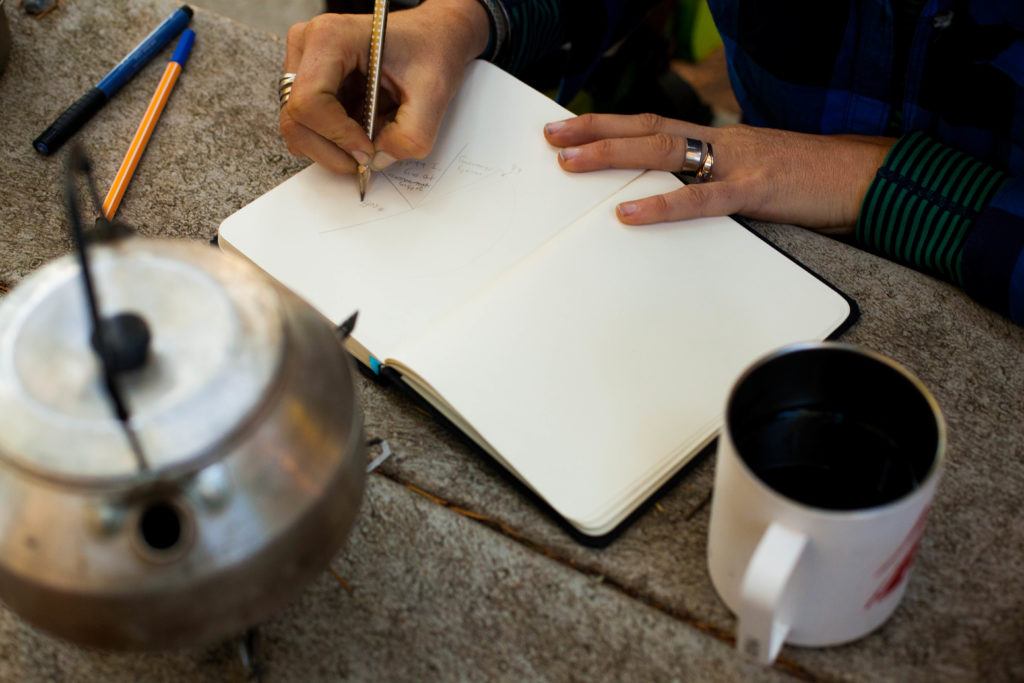
Cleaning out the cobwebs, it’s quality time with a blank page – photo by Anna Brones
Make time to create
There are many links between creating art and mental health benefits, like lowering stress levels. Any creative activity where you are focused on your work and free of distractions can help do this. Pick a project that’s simple enough that everyone feels empowered to do it, but also gets us out of our self-defined creative restraints, the kind of activities that engage our right brain.
Good options are continuous line drawing (where you don’t lift the pen or pencil), painting a landscape with a set number of colors that you wouldn’t normally associate with that landscape, or writing a short story in a set amount of words.
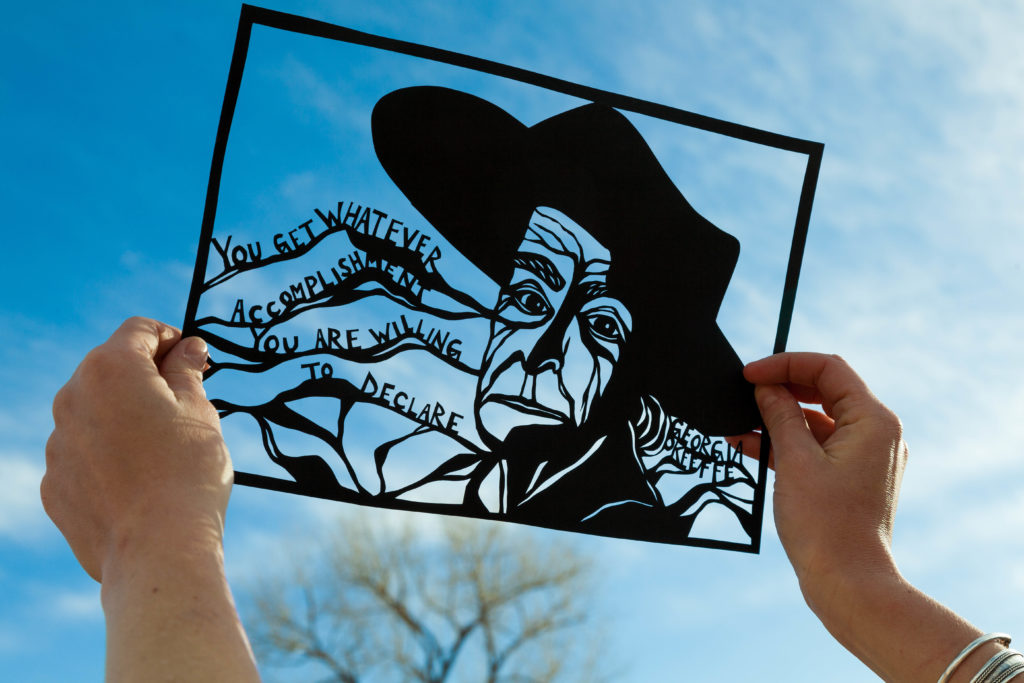
Cutout art against the blue Texas sky – photo by Anna Brones
Engage with those around you
With the amount of technology at our fingertips, it’s easy to feel like we have a lot of social connection. But nothing can replace the benefits of interacting with someone in real life. In telling our stories, and listening to those of others, we are reminded of our commonality. You may think that you are alone in a certain feeling, but that can quickly change as you begin to listen to others. Create a space that’s safe and accommodating, where everyone feels that they can share and open up. Work on cultivating deep listening, by removing distractions (hello cell phone!) and potentially giving everyone discussion prompts.
Anna Brones is a writer, artist, and producer. She is the author of several books including Best Served Wild: Real Food for Real Adventures and Live Lagom: Balanced Living the Swedish Way. She is the founder and publisher of Comestible, a bi-annual zine about food, and also works as a papercut artist, handcutting illustrations out of single pieces of paper. More of her work can be found at annabrones.com.
Photos courtesy of both Anna Brones and Jules Davies. See more of Jules’ photography work on her portfolio site.
Editor’s note: While this piece was published in partnership with Subaru, the opinions of the author are all her own. Meet other Subaru owners at Meetanowner.com and follow along on Subaru’s Instagram.
Be the first to comment